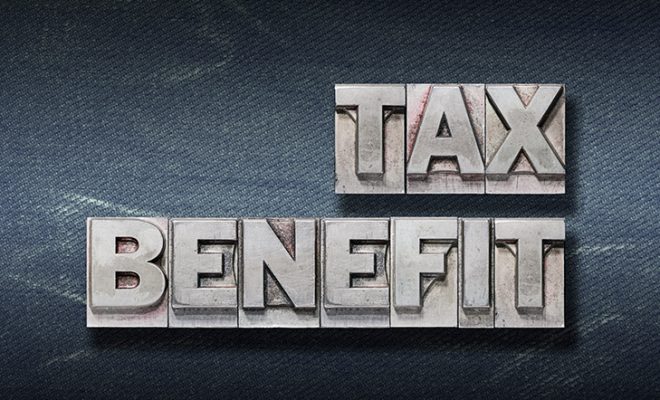Tax Benefits of Semi-Retirement

Retirement is a dream for many, but not for everyone. Some people might not want to retire fully and instead opt for a partially retired life. This allows them to have more time for themselves while still being able to work in some capacity. It also provides a host of financial, mental, physical, and other benefits. Now, semi-retirement is very subjective. It can imply different meanings to different people. For some, the phase includes reducing their working hours. For others, it could be to take up a part-time job or venture into a small business. Irrespective of the implication, the tax benefits of semi-retirement accrue to all. This is why semi-retirement is highly coveted.
Here are some tax benefits enjoyed by semi-retirees:
- Lower federal income tax
The basic implication of semi-retirement is that a person is either working for another person for lesser working hours, part-time, or has their own business. As per the IRS (Internal Revenue Service), self-employed retirees are considered small business owners. According to this understanding, the reforms made by the Tax Cuts and Jobs Act (TCJA) in 2017 considerably reduced the taxes for semi-retired people. Each tax slab was reduced by 2%, and the corresponding tax brackets were increased. The new brackets are 10%, 12%, 22%, 24%, 32%, 35%, and 37%. A semi-retired person will fall in a lower tax bracket due to lesser earnings than before. This means that each hour of work will allow more after-tax earnings to the person. For semi-retired people, this translates to significant income but reduced federal taxes. - Increased standard deductions
Semi-retirees are at an advantageous position when it comes to tax deductions. As per the law reforms of 2017, the standard deductions for those not filing for itemized subtraction was increased to $24,000, $18,000, and $12,000 for married, head of household, and other filing statuses, respectively. Moreover, the standard deductions for the elderly add further advantage. For people aged 65 and above, the amount can be increased by $1,650 (single or head of household filing). While for married filing status or where a spouse is 65 years and above, the standard deduction can be increased by $1,300. This allows semi-retirees to gain maximum advantage owing to lower incomes and increased deductions by a specified rather than itemized amount. Moreover, the new law also confers an additional 20 per cent exemption on income from small businesses (including self-employed semi-retirees). But this involves certain terms. An important one is that the reporting of operation needs is to be done on Form 1040 under the relevant head. - Minimized taxes on capital gains and qualified dividends
As per the tax laws, capital gain taxes hold a separate bracket and are not calculated based on the ordinary income tax slabs. For joint filers, who have a gross income below $80,000, the capital gain tax is 0%. For gains from $80,000-$496,000, the taxable rate is 15%, and for long-term capital gains above this, the charge is 20%. Moreover, short-term gains are considered a part of normal income. But both qualified dividends and long-term gains are taxed in the same way. This will lead to a significant amount of money being drained in the form of capital gain taxes, provided a person retires in a high tax bracket. Ideally, the best way to retire is when one is in a lower tax bracket since this leads to lower tax on capital gains. However, in the case of semi-retirement, the income reduces by a significant amount due to reduced working hours, etc. Hence, it becomes the ideal method to cut capital gain taxes. Also, because of adequate funding from the new job, a person does not need to realize capital gains soon and can deploy offsetting strategies to reduce overall taxation in the long run. This also allows more opportunities to harvest capital gains, resulting in more tax-free income with adequate planning.SPONSORED WISERADVISOR
- Better finances and reduced taxes on savings
Semi-retirement helps to generate income and delay retirement savings withdrawals. In the partial working state, a person is either putting away all the income earned to increase retirement account balances or using it for their day-to-day living needs. Either of the two conditions is advantageous. In the former, where the money is being increasingly diverted towards the retirement balances, such as an individual retirement account (IRAs), health savings account (HSAs), 401(K) account, or 403(b) plan, etc., the value of the fund increases, owing to a larger sum and longer period for the investments to grow. On the other hand, in case, the semi-retirement income is used to support the existing lifestyle, then that also allows more time for the retirement account savings to accumulate. From the point of view of tax, these schemes are employer-sponsored retirement plans. Thus, as per law, they reduce the taxable income directly, while simultaneously, allowing the savings to grow tax-deferred until withdrawn. To make the most of semi-retirement, it is essential to max out all options and save tax. The contribution limit for IRAs for 2019-2020 is $6000 + $1000 for investors aged 50 years or more, in catch-up contributions. However, for a 401(K) account, the upper cap is $19, 500 + $6, 500 for people aged 50 years and above. - Improved Social Security benefits
Semi-retirement does not only offer direct tax benefits, but it also allows for many indirect financial advantages. In this phase of life, a person is engaged in work in some capacity or the other. This provides enough funds to support a standard lifestyle. Thus, there is no urgent need to withdraw their Social Security benefits. This advantage of delaying the withdrawal is very beneficial. Even though lawfully, a person can start collecting Social Security benefits from the age of 62, keeping the money intact in the account will enhance savings. The longer the withdrawal is delayed, the larger the monthly benefits become. Someone who takes the benefit at the official retirement age of 66 will get 100 per cent of the monthly benefit. Others who start to withdraw the Social Security amount one year post the official retirement age – at 67, will get 108 per cent of the monthly benefit. Similarly, at 70 years, the monthly benefits will be 132 per cent, as they will be delayed by 48 months.
To sum it up
Semi-retirement has become an increasingly adaptive trend in the U.S. With more than a third of the American retirees working to earn an income even after retirement, the trajectory of the trend is strongly rising. Semi-retirement is a great consideration, especially for people in their 50s and 60s. Apart from the monetary benefits, semi-retirement also offers several advantages when compared to full-time retirement. A semi-retired life is relatively more fulfilling and socially active. It keeps people motivated and healthy and allows them to feed their passions. Moreover, with increased longevity records, there will be a lot of time to go off work and enjoy the perks. Till then, one can enjoy semi-retired benefits and allow their wealth to accumulate.
To gain deeper insights and maximize semi-retirement benefits, consulting Financial Advisors can be a great step.











